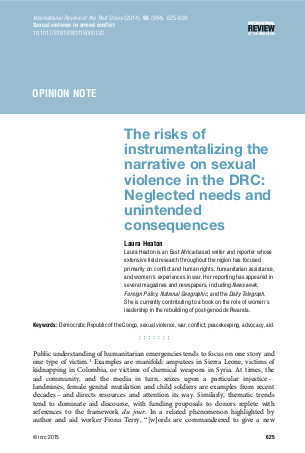
Public understanding of humanitarian emergencies tends to focus on one story and one type of victim. Examples are manifold: amputees in Sierra Leone, victims of kidnapping in Colombia, or victims of chemical weapons in Syria. At times, the aid community, and the media in turn, seizes upon a particular injustice – landmines, female genital mutilation and child soldiers are examples from recent decades – and directs resources and attention its way. Similarly, thematic trends tend to dominate aid discourse, with funding proposals to donors replete with references to the framework du jour. In a related phenomenon highlighted by author and aid worker Fiona Terry, “[w]ords are commandeered to give a new gloss to familiar themes: ‘capacity building’ became ‘empowerment’, which has now become ‘resilience’”. In the Democratic Republic of the Congo (DRC), the conflict has been largely defined by sexual violence, and raped women are its most prominent victims.
